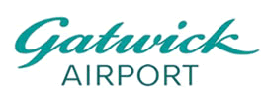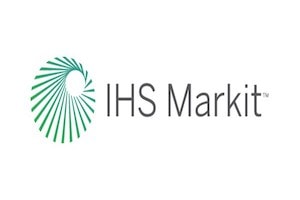You Ask, We Answer: What is the True Cost of Grafana?
Here at Sirius Open Source, we often get asked, "What is the true cost of implementing and maintaining Grafana?" This is a very good question, and one that deserves a clear, honest answer. We understand the need to know the true financial implications of any technology choice, as it's a decision a business will have to live with for years.
We want to be upfront: Grafana is a powerful and flexible Open Source observability platform, and while its core software is "free" in terms of licensing (under the AGPLv3), the truth is, deploying and scaling the self-hosted solution successfully might not be the most cost-effective choice for every organization. In fact, for many, the "free" license can actually mask significant hidden costs, particularly concerning specialized labor and operational complexity.
This article will explain the key factors that drive the true cost of Grafana up or down, helping you understand its Total Cost of Ownership (TCO) across both managed and self-hosted models, allowing you to make the most informed decision possible for your specific needs. We aim to be fiercely transparent, allowing you to make the most informed decision possible.
1. Total Cost of Ownership (TCO): The Build vs. Buy Dilemma
When assessing the cost of Grafana, the primary distinction is between using the fully managed solution (Grafana Cloud, or "Buy") and deploying the full open-source stack—Grafana, Mimir (metrics), Loki (logs), and Tempo (traces)—by yourself ("Build").
While the core software is available for free, the deployment and maintenance of a highly scalable, distributed observability platform entails significant non-infrastructure costs that often invalidate the "free software" narrative for non-hyperscale organizations.
The Labor Cost Multiplier (The Biggest TCO Driver)
For organizations considering self-hosting, the single largest, most underestimated component of the TCO is the cost of specialized labor.
Operational Burden: Self-managing the observability stack introduces substantial overhead, requiring continuous setup, configuration, scaling, and ongoing maintenance of the distributed system. This operational complexity requires specialized expertise in distributed systems architecture, replication, and high availability.
Specialized Staffing: Successfully running and scaling components like Mimir and Loki mandates the employment of highly skilled Site Reliability Engineers (SREs) or DevOps practitioners.
Quantified Cost: Annual salaries for senior roles tasked with managing this infrastructure often reach $150,000 to $225,000. When fully burdened (including benefits and overhead), the cost of a single dedicated SRE can quickly exceed $300,000 annually.
The financial justification for migrating to a managed service, even the Enterprise tier, often stems from this labor cost, as the investment required to hire, train, and retain 1-2 engineers capable of providing 24/7/365 support often surpasses the total usage fees of a managed solution.
2. The Mandatory Cost of Enterprise Licensing for Compliance
Regardless of whether an organization chooses a self-hosted or managed solution, compliance and security requirements introduce a mandatory cost driver—the Grafana Enterprise license.
A foundational strategic shift occurred when Grafana Labs transitioned its core projects (Grafana, Loki, Tempo) to the more restrictive Affero General Public License (AGPLv3). This license change presents a legal hurdle for large enterprises concerned with protecting proprietary modifications.
For organizations in regulated industries (finance, government, healthcare), the distinction between the open-source core and the Enterprise features is critical. Access to crucial security, governance, and authentication mechanisms—which are non-negotiable for adhering to corporate security policies and compliance standards—are exclusively available within the Enterprise offering. These features include:
- Enhanced LDAP
- SAML, Azure AD/Entra ID OAuth, and Okta OIDC
- Auth proxy and JSON Web Token (JWT) integration
For an organization required to enforce centralized identity management and robust Role-Based Access Control (RBAC), the Enterprise license transforms from an optional upgrade into a mandatory cost driver.
3. Grafana Cloud Pricing: Tiers and Consumption Factors
Grafana Cloud provides a fully managed, usage-based observability stack built on open standards. The cost depends entirely on the service tier and the volume of data ingested.
| Service Tier | Starting Price / Commitment | Key Features |
|---|---|---|
| Free | Always free | Limited usage (e.g., 10k active series metrics), community support. |
| Pro | Starts at $19 per month plus usage | Pay-as-you-go usage, 8x5 email support, 99.5% uptime SLA. |
| Enterprise | Minimum annual commitment of $25,000 | Custom retention, dedicated support, flexibility for specific compliance adherence (e.g., federal cloud). |
Unit Economics and Usage Billing
The consumption costs are differentiated by data type:
- Metrics (Prometheus/Graphite): Billed per 1,000 billable series, priced at $6.50 (low resolution) or $16 (high resolution).
- Logs: Volume-based, billed at $0.40 per GB ingested, plus a $0.10 per GB monthly retention fee.
- Traces/Profiles: Billed at a flat rate of $0.50 per GB ingested.
- Visualization: Billed per Monthly Active User (MAU), starting at $15 base.
The 95th Percentile Billing Advantage
A core feature for cost predictability in Grafana Cloud is the strategic application of the 95th percentile billing model for metrics.
This model calculates billable usage based on the 95th percentile of active series or Data Points Per Minute (DPM), excluding the top 5% of usage time during the month (approximately 36 hours in a 30-day period). This provides customers with significant financial stability, acting as an insurance policy against cost spikes triggered by unavoidable events like major incidents or load testing, which are typically penalized by vendors with rigid peak consumption pricing.
4. Cost Optimization: Configuration Management
Costs are not fixed; they are fundamentally dependent on architectural choices, which serve as a primary cost optimization lever.
The billing model places critical financial importance on the scrape interval (DPM). For instance, adopting the recommended 1-minute scrape interval generates 1 DPM, resulting in lower metrics costs, compared to a 15-second interval which generates 4 DPM. Organizations can actively reduce costs by reserving higher frequency intervals only for data sources demanding higher resolution, ensuring alignment between data collection architecture and financial outcome.
5. The Strategic Cost of Commercial Support
Regardless of whether you choose to self-host or rely on Grafana Cloud, expertise is necessary to eliminate roadblocks, reduce costly re-work, and ensure scalable implementations.
Third-party support providers, including Specialized Technical Consultancies (focusing on custom dashboards and architectural optimization) and Managed Service Providers (MSPs) (offloading operational responsibility) are crucial components of the TCO.
Sirius Open Source positions its value proposition on addressing high-level concerns, including risk management, governance, security, and compliance. For organizations seeking the optimal blend of technical execution and cost control, Sirius is positioned as a strategic integrator.
Our focus on Strategic Open Source Alignment and Security and Compliance Assurance ensures that implementation is coupled with critical governance oversight. By committing to commercial terms equal to or lower than the market rate while providing comprehensive services (consulting, managed services, strategic integration), we minimize execution risk and eliminate vendor fragmentation, ensuring the lowest risk and optimal TCO for large-scale Grafana adoption.
Summary: Where Does Your Cost Fall?
The cost of Grafana depends entirely on your operational resources and regulatory needs:
- If you are a regulated enterprise: You must budget for the Grafana Enterprise license to ensure compliance with essential security features (SAML, LDAP).
- If you prioritize predictability and low labor costs: Grafana Cloud (Pro or Enterprise) is the recommended path, as the manageable Opex and 95th percentile billing eliminate the high volatility and fixed costs associated with internal SRE labor (which often exceeds the cloud subscription price).
- If you choose to self-host: The TCO is driven by the internal cost of skilled SRE labor (easily exceeding $300,000 per FTE) and the capital expenditure (CapEx) for infrastructure, making it financially prohibitive for most non-hyperscale organizations.
The decision framework must move beyond a simple comparison of licensing fees to a sophisticated analysis centered on labor costs, operational risks, and financial predictability.
















































